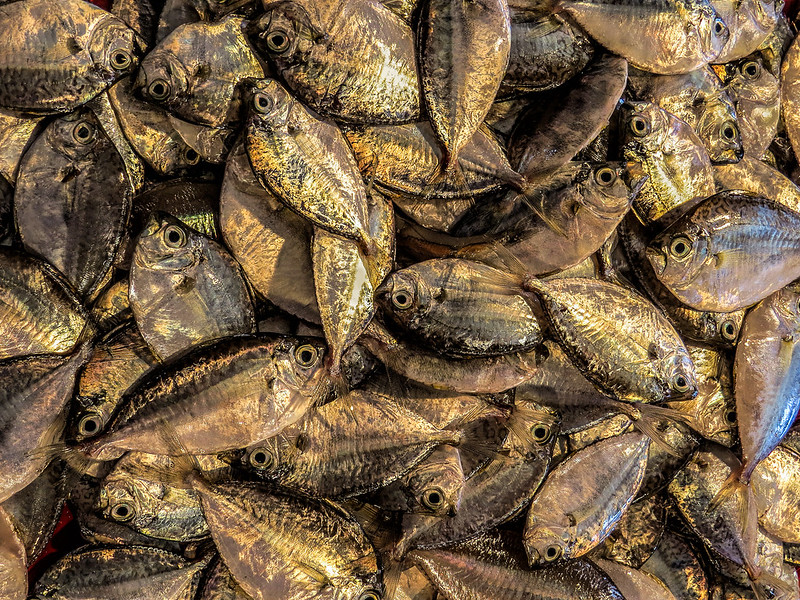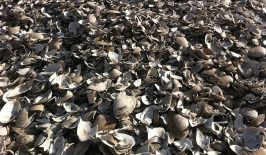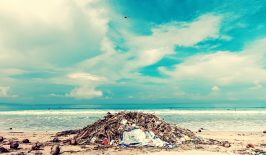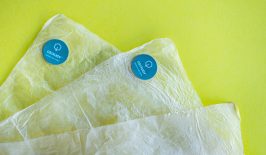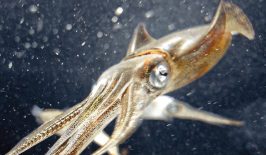The damage caused by plastic pollution has the potential to impact many different ecosystems. However, none have attracted more attention than plastic pollution’s effect on our seas and oceans. Large scale projects such as The Ocean Cleanup have explored ways of removing plastic from the ocean, while others have experimented with creating innovative bioplastics that decompose in soil.
Now, a team from the Memorial University of Newfoundland has developed a new method of creating these kind of more environmentally-friendly bioplastics and they’ve taken inspiration from sea life itself – or more accurately, the remains of sea life. The project, recently unveiled at the spring meeting of the American Chemical Society (ACS) by researchers Francesca Kerton and Mikhailey Wheeler, has created a plastic-like substance from fish bones and other fish waste products.
The base of this bioplastic product is provided by natural fish oil. Producing fish oil from fish waste is not a new process, of course, but turning it into a bioplastic has never been explored before.
Firstly, the team acquired large amounts of fish waste taken from commercial salmon fishing. The fish oil was then extracted from the remains and oxygen was added to the unsaturated oil in a controlled manner to produce epoxides, molecules similar to those seen in epoxy resin. Those were then reacted together with carbon dioxide, which links together nitrogen-containing amines to form a new polymer substance. The team behind the project suggests that these plastic-like materials could be used in packaging or turned into fibres for clothing.
This is not the first time sea life has been used as the basis for bioplastics. Previous experiments have been carried out with the kerotin from squid teeth, while last year an Australian company used shrimp and prawn waste to produce chitosan, a kind of polycarbohydrate that can be turned into a truly biodegradable bioplastic.
How Biodegradable is Bioplastic Anyway?
 © Mikhailey Wheeler This new biodegradable material made from fish waste could be used to replace plastic in packaging and clothing.
© Mikhailey Wheeler This new biodegradable material made from fish waste could be used to replace plastic in packaging and clothing.The origins and biodegradability of these new forms of bioplastic may be important for the industry overall. Bioplastic itself is a broad spectrum of materials which aims to copy the properties of traditional crude oil derived plastics, but using biological sources. The term itself does not automatically mean a plastic is compostable in the traditional sense. Currently, many bioplastics are based on polylactic acid (PLA) taken from sources such as corn starch or soybeans. Although more environmentally friendly compared to oil-based plastic, these sources also come with downsides.
Firstly, they require large amounts of land and water to be produced, especially on a scale that can match the commercial demand for cheap single-use plastics. With land and water already under pressure globally, this kind of production merely adds to the environmental burden, especially in certain regions. Secondly, such PLA plastics are not biodegradable in the true sense, but are perhaps better termed ‘more biodegradable’ than traditional plastic. Currently, PLA plastics must undergo consistent treatment with heat and special enzymes to break down the plastic. Without such treatment, even PLA plastic bottles can potentially last up to 1,000 years. So, although they do not pose the same risk in terms of toxicity as oil-based plastics, they can still harm the welfare of animals.
Additionally, the more truly biodegradable plastics tend to feature weaker mechanical properties, which can result in a shorter lifespan and fragility. This means that some bioplastics are simply not up to the standard demanded by manufacturers and consumers. This inability to match industrial demands is further compounded by the cost and low-yield imvolved in bioplastic production.
Furthermore, the creation and recycling of bioplastics may require the development of new industrial processes and supply chains that also end up increasing carbon emissions and causing more environmental degradation. Ultimately, the environmental benefits of bioplastics can be greatly improved if, like this project, the producers source their raw materials from the waste products of preexisting supply chains – although some may challenge the environmental credentials of an industry frequently accused of overfishing. In any case, trying to enable a more efficient use of resources and backing this up with more efficient logistic management, waste and damage can be – at least theoretically – kept to a minimum.
The team behind the new fish waste study are currently exploring just how biodegradable their new polymer is. Tests have been conducted by simply leaving bioplastic in water, as well as water mixed with lipase, an enzyme used to break down fats such as those in fish oil. In both cases, the team saw the growth of bacteria which hopefully suggests a good level of biodegradability.
